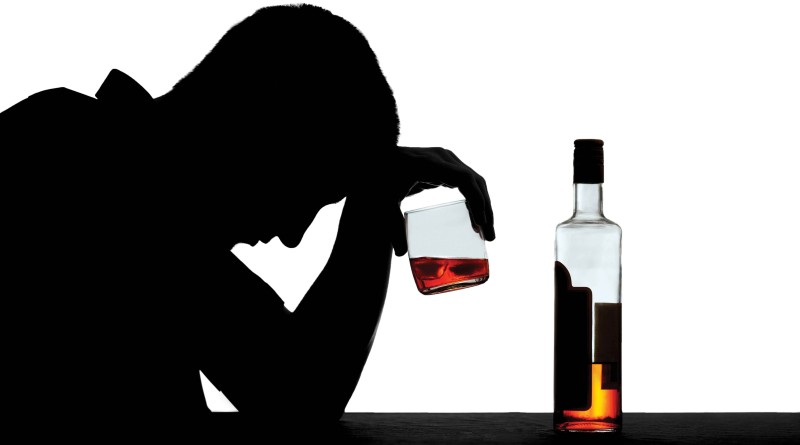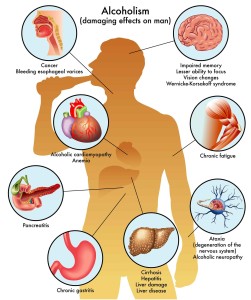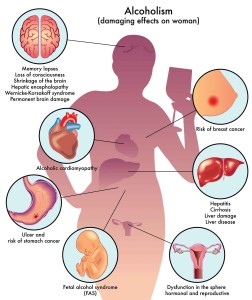Deadly Dependence
The rising trend of alcohol abuse in India has grave implications on the health, mental equilibrium and social standing of those who get addicted to it
By Amresh Kumar Tiwary
The growing incidence of alcohol consumption in the Indian society has wide-ranging negative effects manifesting not only in health-related aspects but adverse social and economic conditions too. Curbing alcohol abuse needs to be made a priority in public health policy in India
Alcohol consumption is a global phenomenon but it is now getting worldwide attention due to its harmful outcomes. Alcohol is classified as psychoactive substance which produces dependence. It has not only important implications on health but has social and economic aspects as well. There are a number of factors which determine alcohol consumption in a society.
According to Dr Vinay Aggarwal, Ex President, Indian Medical Association, New Delhi and Founder Chairman, Max Superspeciality Hospital, Vaishali, social factors like cultural practices, level of development, alcohol production, distribution and marketing strategies are important factors. In India, alcohol consumption on certain religious occasions and social gathering is an accepted norm. Similarly, consumption of alcoholic beverages is prevalent in many tribal and village societies around the world. Individual factors also play a role in the pattern of alcohol consumption. Age group, gender, socio-economic factors, education, certain occupation, familial tendency, peer pressure etc are individual determinants of alcohol intake. Early age of initiation of alcohol intake leads to higher rates of diseases due to abuse, accidents and injuries.
Alcohol consumption, determinants of its use in different populations, consequences on health and different strategies to reduce the health and social burden caused by the alcohol abuse are important issues for public health in India.
Harmful use of alcohol is defined by the World Health Organization (WHO) as “drinking that causes detrimental health and social consequences for the drinker, the people around the drinker and society at large, as well as the patterns of drinking that are associated with increased risk of adverse health outcomes”. The adverse use of alcohol leads to deaths of millions of people worldwide every year making it a grave concern for society.
Shocking Figures
As per the WHO, worldwide 3.3 million deaths result from harmful use of alcoholevery year, which is 5.9 % of all deaths. Alcohol consumption causes death and disability relatively early in life. In the age group of 20-39 years, approximately 25% of the total deaths are alcohol-attributable. A majority of this is due to injuries. Excessive use of alcohol kills or disables people at a relatively young age which puts a huge burden on society. Indian figures by WHO shows that per capita alcohol consumption in the age group of 15 years and above is about 4.3 liters. Most common ill-effects effects of alcohol consumption in India are liver cirrhosis and road traffic accidents. Prevalence of alcohol use-related disorders is 2.2% in India.
Cause and effects
Alcohol is a contributory factor in more than 200 diseases and injuries. There is a causal relationship between harmful use of alcohol and mental and behavioural disorders. It is an independent risk factor for non-communicable conditions as well as injuries. Recent studies have reported the role of alcohol in infectious diseases like tuberculosis and HIV/AIDS too. Beyond health consequences, the harmful use of alcohol brings significant social and economic losses to individuals and society at large. The harmful effects of alcohol are dependent on amount, type and frequency of usage of alcohol.
• Mental disorders: Alcohol consumption leads to neuropsychiatric conditions called alcohol use disorders. Epilepsy, seizure disorder, depression and anxiety are directly attributed to alcohol consumption.
• Gastrointestinal diseases: Liver cirrhosis, pancreatic diseases are some examples.
• Cancers: One of the most serious effects of alcohol is cancer. Alcohol is causative factor for cancer of the mouth, pharynx, laryngeal cancer, oesophageal cancer, colon and rectum cancer, stomach cancer, kidney and urinary bladder cancers, liver cancer and female breast cancer.
• Injuries and accidents: Alcohol consumption is directly associated with road traffic accidents, gang violence and criminal activities. These may lead to severe injuries leading to disabilities and deaths.
• Cardio vascular diseases: Alcohol consumption has negative consequences on hypertension, atherosclerosis, atrial fibrillation and stroke. Heavy drinking is a risk factor for heart diseases, stroke and diabetes.
• Maternal and foetal mortality: Alcohol, if consumed by female during pregnancy, has detrimental effects on the baby. It leads to congenital deformities in foetus.
• Infectious diseases: Alcohol directly weakens our immune system, thereby making human body prone to a number of infections. This is especially relevant in pneumonia and tuberculosis.
• Reproductive health outcomes: Reproductive problems in females like reduced fertility. In males, it is associated with reduced sperm count and erectile dysfunction thereby causing fertility problems.
• Socio economic consequences: Alcohol consumption leads to inefficiency in work and in fulfilling family and social relations. It is associated with loss of job, poverty, domestic violence, damage tothe one’s image in society, loss of productivity, absenteeism and earning potential.
Prevention and control measures
Says Vinay Aggarwal, “The market forces which are promoting alcohol should be brought under legislative control. Regulating the marketing of alcohol is essential since it has important impact on younger population. Restricting the availability of alcohol can be effective. Legislations should be made and strictly enforced. Taxation policies can have huge impact on alcohol demand and supply system. Raising public awareness about the harmful effects of alcohol is essential. Innovative strategies should be used including mass media campaigns for the same. More and more counselling and rehabilitation centres should be opened for those in need all over the country. Those who recover should be integrated within the society without stigma and discrimination. All healthcare workers, social workers should be trained in counselling alcohol users.”
The WHO has launched “Global monitoring framework for the prevention and control of non-communicable diseases”. India being one of the signatory of this is committed to take measures for reduction of harmful effects of alcohol intake. In India, there is lack of a uniform law to cover alcohol production and sale across the country.
Certain states like Gujarat have framed legislations at the state level to curb the liquor menace. The Punjab Excise Act, which also extends to Haryana, prohibits establishments from employing women in any part of such premises in which liquor is consumed by the public. Drunk driving is a punishable offence. Legal limits are set for alcohol concentration for breath analyzer test.
Dr H P Singh, Senior Child Specialist, Mother Child Care Hospital, Vaishali, observes, “There is growing incidence of consuming alcohol in teenagers which might harm their future. There are national prohibited days which are specific days when the sale of alcohol is not permitted. The government of India has established detoxification centres and counseling centers for people who need special care and rehabilitation. Although steps have been taken but they are not sufficient. Despite its negative effects on almost every aspect of life, alcohol consumption has remained a relatively low priority in public health policy in India.”
To combat the problem of alcohol abuse, political will is of utmost importance. Public policies and interventions to prevent and reduce alcohol-related harm should be formulated. All stakeholders should be involved while framing the public polices and frameworks for preventing alcohol abuse. Specific care should be taken to prevent initiation of alcohol intake in early age groups like youth. Those who are affected should have easy access to services for care and rehabilitation.




